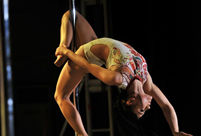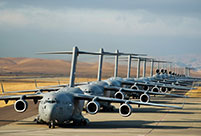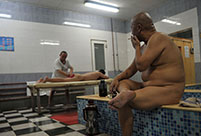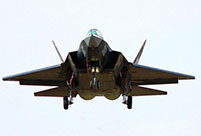 If you like autumn, put your hands in the air!
If you like autumn, put your hands in the air!
 Fan Bingbing's "Queen style" in new play
Fan Bingbing's "Queen style" in new play
 Lingerie show at 2014 Miss China
Lingerie show at 2014 Miss China
 J-10 fighters show aerobatic stunts in smog-free sky
J-10 fighters show aerobatic stunts in smog-free sky
 Charming contestants of Shanghai Int’l Model Contest
Charming contestants of Shanghai Int’l Model Contest
 Most amazing chi-pao beauties
Most amazing chi-pao beauties
 7 deadly animal attacks
7 deadly animal attacks
 Picturesque autumn scenery of Hongshan Army Horse Ranch
Russia to launch 70 Proton rockets by 2020: official
Picturesque autumn scenery of Hongshan Army Horse Ranch
Russia to launch 70 Proton rockets by 2020: officialLOS ANGELES, Oct. 31 -- Virgin Galactic has been a dream inspirer since it first unveiled plans in 2008 to send ordinary tourists to space. The dream, however, was somewhat dampened by Friday's crash of its spaceplane.
The spaceplane developed by Virgin Galactic went down after an explosion during a powered test flight over a desert area in the U.S. state of California.
The result was tragic: one of the two pilots was killed and the other seriously injured. The survivor was flown to hospital by an air ambulance.
Local TV footage showed the plane was in pieces in Mojave desert, where debris was scattered over a wide area.
"Virgin Galactic's partner Scaled Composites conducted a powered test flight of SpaceShipTwo earlier today. During the test, the vehicle suffered a serious anomaly resulting in the loss of the vehicle," the commercial company said in a statement.
The explosion came after the plane dropped away from its WhiteKnightTwo carrier airplane and fired up its hybrid rocket engine, said Stuart Witt, CEO and general manager of the Mojave Air and Space Port in California.
Nothing seemed abnormal during the takeoff prior to the spaceship's failure, Witt told reporters at a news conference.
After the anomaly, at least one parachute was reportedly sighted over the Mojave Air and Space Port in California, the base from which SpaceShipTwo and its WhiteKnightTwo carrier plane took off.
"Space is hard and today was a tough day," George Whitesides, the CEO of Virgin Galactic, said at a news conference.
In 2008, when Virgin Galactic, led by British billionaire Richard Branson, predicted it would be launching paying passengers to space by 2010, a lot of celebrities including Hollywood superstar Leonardo DiCaprio announced they would like to be its first customers.
Four years beyond the plan, commercial trips to about 100 km above Earth -- the beginning of outer space, remained elusive.
The latest development is that Virgin Galactic said it was on track to begin commercial service in 2015, when the first dispatch of six passengers would be able to experience weightlessness in the cabin of its spaceship.
What's needed to put you on the waiting list is a payment of 250,000 U.S. dollars.
Everything seemed to be running smooth. Reporters were invited onboard the dream-liner recently, which has a cabin with many windows, apparently designed to offer a fantastic view of the space during a six-minute tour free of the drag of Earth.
Then came the accident, which analysts said was a huge blow to the nascent industry.
Witt tried to boost the morale, saying that the commercial space industry and all the young entrepreneurs working in it must move beyond the tragedy.
"My message to them is stay the course," he said.
Whitesides echoed his words, saying: "we're going to get through it. The future rests in many ways on hard days like these."
 World Pole Dance Championship in China
World Pole Dance Championship in China U.S. air force transport planes row up on base
U.S. air force transport planes row up on base Post-85s female pilots and their mission
Post-85s female pilots and their mission Century-old public bath closes door in Beijing
Century-old public bath closes door in Beijing Shocking! Photos of Chinese fighters revealed
Shocking! Photos of Chinese fighters revealed Images of angels in white: At work v.s off work
Images of angels in white: At work v.s off work  Standard faces for each countries in the world
Standard faces for each countries in the world Netizens fall in love with champion swimmer Ning Zetao
Netizens fall in love with champion swimmer Ning Zetao Vibrant 21-year-old and her own Cheongsam brand
Vibrant 21-year-old and her own Cheongsam brand Top 10 most dangerous jobs in the world
Top 10 most dangerous jobs in the world  Top 10 fifth generation jet fighters in the world
Top 10 fifth generation jet fighters in the world Top 10 Chinese goddesses
Top 10 Chinese goddesses  Top 20 hottest women in the world in 2014
Top 20 hottest women in the world in 2014 Top 10 pure beauties in showbiz
Top 10 pure beauties in showbiz  Top 10 world's highest-paid models 2014
Top 10 world's highest-paid models 2014 The most gorgeous Chinese women
The most gorgeous Chinese women Top 10 most handsome faces in Asia
Top 10 most handsome faces in AsiaDay|Week|Month